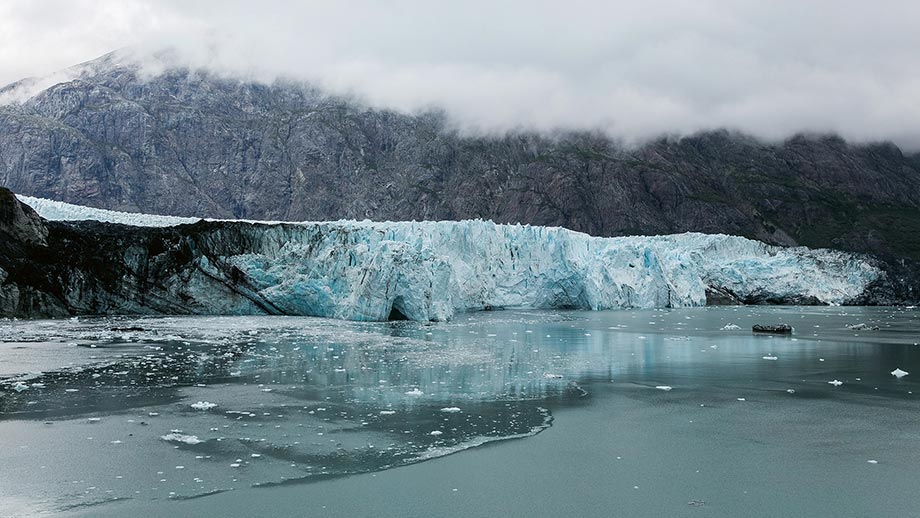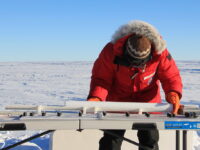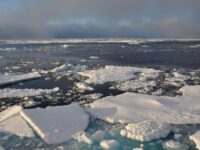The world is constantly in motion. From the smallest particles vibrating in a rock to planetary motion in space, few things remain unchanged. It, then, should be no surprise that Earth’s poles — its rotational axis — also shift. This is actually quite normal; polar motion is categorized in multiple time scales, and the most typical ones — the annual wobbles and Chandler wobbles (which occur in approximately 433-day cycles) — periodically move the poles in a predictable circular pattern. On a larger geologic time scale, there has been a secular movement of the axis westward. However, over recent decades, this polar drift has shifted in the opposite direction — now eastward toward Greenland. For decades, observations of the Earth confirm this undisputed fact. The matter for scientists now is to answer the question: why?
Geophysics researchers attribute these polar shifts to the movement of Earth’s mass between land and the ocean. These can be triggered by regular weather patterns — atmospheric winds and ocean currents — that impact the periodic pole oscillations, or by larger forces, such as excitations from tectonic plate movements or land reformation caused by the formation or melting of glaciers (known as glacial isostatic adjustment), both which have greater effects on the secular scale of polar motions. These natural forces adjust the mass underneath our feet, changing the flow rate of the mantle of Earth’s inner layers and, ultimately, the inertia. However, these alone do not provide the answer to the entire movement, and a study conducted in the Earth and Planetary Science Letters found that this force impacts approximately a third of the drift’s magnitude.
Climate change has been a large focus of many scientists in relation to polar drift. The steady warming of global temperatures has had a large impact on several natural forces, and human activity may also implicate the magnitude and rate of polar drift. In particular, researchers have found that changes in ice and sea levels contributed to eastward pole movement. Connecting these two components, melting ice sheets and mountain glaciers both decrease the terrestrial water storage while simultaneously transferring these stores to the ocean and increasing sea levels.
Researchers have found that changes in ice and sea levels contributed to eastward pole movement.
The effects of decreasing land water stores in mid-latitudes propagate drift. Redistribution of mass from ice to water in this region especially impacts Earth’s inertia, thus becoming a location of great sensitivity to polar motion. This may be the reason that melting glaciers in certain locations across the globe, such as high mountain Asian glaciers and Southern Andes glaciers, have been reported to have a larger role in driving the amplitude and direction of polar motion, although glaciers cannot explain the entirety of depleting terrestrial water storage. Human behaviors and interactions with Earth play a role as well. The decreases in groundwater in the Middle East and India, for example, were found to have majorly impacted polar drift between 2002 to 2013, according to a study in Geophysical Research Letters. These storage depletions — from unsustainable consumption in human activities such as irrigation — along with climate change likely contributed to the rapid rate of terrestrial water storage depletion and consequent rise in sea levels.
Multiple studies have created climate change models that directly correlate with the eastward movement of Earth’s poles. While large forces such as mantle flow and glaciation have greatly impacted these secular movements, recent studies have revealed the contributions of the rapid changes in the climate. The series of events resulting from rising global temperatures connect with the increasing rates of these secular pole movements. We can also observe this phenomenon in reverse. Through monitoring the drifting patterns of Earth’s poles, scientists hope to develop a system to monitor changes in the climate over time. Climate change affects the motion of the world in various ways, from living organisms to the nonliving atmosphere. Here, we find that even the motion of Earth changes its behavior because of how we interact with it.
Geophysical Research Letters (2021). DOI: 10.1029/2020GL092114
Earth and Planetary Science (2018). DOI: 10.1016/j.epsl.2018.08.059
Geophysical Research Letters (2013). DOI: 10.1002/grl.50552






